A standard 1960 nickel with “D” (Denver) or no mint mark is typically worth face value, but specific errors can dramatically increase its value. The most valuable is the quadruple die reverse error, worth over $1,400 in high grades, showing clear doubling on Monticello and “5 Cents.” Other significant errors include broad strikes on split planchets (worth $60-$125) and nickels struck on penny planchets (over $470). The 1960 “D” notably lacks “full steps” examples. To identify valuable coins, check for the “D” mint mark on the reverse right of Monticello, or no mint mark indicating Philadelphia minting. Look for visible doubling, unusual strike patterns, or off-center strikes that indicate errors worth collecting.
That worn 1960 nickel sitting in your change jar probably isn’t worth more than five cents—unless it carries one of several rare minting errors that can transform it into a $1,400 treasure. With nearly 200 million Denver nickels and millions more from Philadelphia minted that year, most circulated examples hold face value. But collectors actively hunt specific error varieties that command premium prices at auction, particularly quadruple die reverses and wrong planchet strikes that escaped quality control.
Understanding 1960 Jefferson Nickel Production
The United States Mint produced Jefferson nickels at two facilities in 1960: Philadelphia (no mint mark) and Denver (D mint mark). Philadelphia struck approximately 69 million pieces while Denver’s output reached a staggering 193 million coins. This massive production volume means well-worn circulated examples remain abundant in pocket change even six decades later.
Standard 1960 nickels contain 75% copper and 25% nickel, weighing 5 grams with a diameter of 21.2 millimeters. The obverse features Thomas Jefferson’s profile facing left, while the reverse displays his Virginia home, Monticello. These specifications remained consistent throughout 1960 production, making error coins particularly noticeable when deviations occurred.
The Denver mint mark appears as a small “D” on the reverse, positioned to the right of Monticello near the building’s base. Philadelphia coins carry no mint mark, leaving the area blank. This simple identifier helps collectors quickly sort their finds before examining for valuable errors.
Denver Mint Mark Errors Worth Serious Money
Quadruple Die Reverse: The $1,400+ Error
The most valuable 1960-D error shows dramatic quadrupling on the reverse design elements. Strong doubling appears on Monticello’s columns, steps, and the “5 CENTS” denomination. In exceptional Mint State grades (MS-65 and higher), these specimens have reached $1,422 at Heritage Auctions sales.
This error occurred when the die received multiple impressions during the hubbing process, each slightly offset from the previous strike. The resulting coin shows layered images that create a distinctive blurred or shadowed effect visible to the naked eye. Under magnification, you can count individual impressions on the affected areas.
| Grade | Quadruple Die Reverse Value |
|---|---|
| Good (G-4) | $45-$65 |
| Fine (F-12) | $125-$175 |
| About Uncirculated (AU-50) | $380-$450 |
| Mint State (MS-63) | $725-$850 |
| Mint State (MS-65) | $1,200-$1,422 |
Broad Strike on Split Planchet
Split planchet errors happen when the metal blank separates into layers before or during striking. A 1960-D nickel struck broadly on a split planchet shows incomplete reeding around the edge and typically weighs significantly less than standard 5 grams. The coin appears thinner than normal, sometimes revealing copper layers between nickel surfaces.
Certified examples in About Uncirculated condition have sold for $127 through major auction houses. The dramatic visual appeal makes these errors popular with collectors who specialize in mint mistakes. The coin must show clear evidence of splitting with visible separation layers to command premium pricing.
Wrong Planchet Strikes: Nickel Design on Penny Blanks
Among the most dramatic 1960-D errors are nickels struck on one-cent planchets. These pieces weigh approximately 3.11 grams (the weight of a 1960 penny) instead of the proper 5 grams and measure slightly smaller in diameter. The copper planchet creates an unusual brown or reddish appearance beneath the nickel design.
A professionally graded example reached $473 in a Stack’s Bowers auction. The error occurred when penny blanks accidentally entered the nickel striking press, likely during changeover periods between denominations. Collectors prize these “wrong planchet” errors because they represent clear, indisputable mint mistakes rather than post-mint damage.
Philadelphia Mint Mark Errors and Varieties
Broad Strike on Split Planchet
Philadelphia production also yielded split planchet errors, though less frequently than Denver. A 1960 no-mint-mark nickel on a split planchet in certified condition sold for $62 at auction. The same diagnostic features apply: reduced weight, visible metal separation, and incomplete edge reeding.
The lower price compared to Denver examples reflects supply and demand dynamics rather than quality differences. Denver’s higher mintage created more error opportunities, paradoxically making certain Philadelphia errors slightly rarer in absolute numbers but less recognized in the collecting community.
Misaligned Die Strikes
Misaligned dies create off-center or tilted designs where elements appear partially missing or shifted from their proper positions. On 1960 Philadelphia nickels, strong misalignment showing 20-30% off-center can fetch $35-$85 depending on eye appeal and how much design remains visible.
One eBay listing featured a double die obverse error with noticeable doubling on “IN GOD WE TRUST” and Jefferson’s profile. While authentication remains crucial for high-value purchases, clear misalignment errors trade actively in the $40-$150 range for problem-free examples.
The Missing “Full Steps” Designation
Jefferson nickel collectors traditionally prize “Full Steps” specimens where Monticello’s staircase shows complete, unbroken horizontal lines—typically five or six distinct steps. This detail requires exceptional strike quality and pristine die conditions.
The 1960-D earned an unfortunate distinction as possibly the worst year for reverse die quality in Jefferson nickel history. Professional grading services have not certified a single 1960-D Jefferson nickel with Full Steps designation. Worn dies, inadequate striking pressure, or improper die spacing prevented even uncirculated examples from achieving this detail level.
This absence doesn’t create value through rarity—instead, it reflects manufacturing limitations that affected the entire production run. Collectors seeking Full Steps specimens skip 1960-D entirely, focusing on other dates where this feature exists.
Grading Standards That Determine Value
Understanding professional grading scales helps accurately assess what your 1960 nickel might bring in the marketplace. The Sheldon Scale runs from Poor-1 through Mint State-70, with key breakpoints determining value multipliers.
Circulated Grades:
- Good (G-4): Major design elements visible but heavily worn, rims nearly complete
- Fine (F-12): Moderate wear with all major features clear, some detail in hair and building
- Extremely Fine (EF-40): Light wear on highest points, most design details sharp
Uncirculated Grades:
- About Uncirculated (AU-50/55): Slight wear on highest points, retains significant luster
- Mint State (MS-60 to MS-70): No circulation wear, graded on strike quality, luster, and marks
For error coins, grade dramatically impacts value. A quadruple die reverse worth $65 in Good condition jumps to $1,400+ in MS-65. Third-party certification from PCGS or NGC adds legitimacy and typically increases market value 15-30% compared to raw coins.
Authentication and Certification Process
Before investing significant money in supposed error coins, professional authentication protects against counterfeits and post-mint alterations. Services like PCGS (Professional Coin Grading Service) and NGC (Numismatic Guaranty Corporation) employ expert graders who verify authenticity and assign grades.
Submission costs range from $20-$100 depending on turnaround time and declared value. For errors potentially worth $200+, certification becomes financially justified. The resulting holder (commonly called a “slab”) encapsulates the coin with a label stating grade and error type.
Warning signs of fake errors include artificial doubling created by striking coins outside the mint, scratches or gouges misrepresented as mint errors, and planchet damage simulated through grinding or chemical treatments. Genuine mint errors show consistent characteristics under magnification and match documented examples in reference materials.
Finding Valuable 1960 Nickels in Circulation
While unlikely, valuable 1960 error nickels still surface in circulation. Bank rolls of nickels occasionally contain older coins returned from estate collections or long-forgotten jars. Coin roll hunting involves purchasing rolls from banks, searching for errors and key dates, then returning common finds.
Examine each 1960 nickel under good lighting with at least 5x magnification. Check the reverse first for die doubling on Monticello and the denomination. Weigh suspicious pieces—anything significantly under 5 grams warrants closer inspection for split planchets or wrong planchet strikes.
Local coin shops, estate sales, and online marketplaces offer additional hunting grounds. Many non-collectors dispose of inherited collections without proper evaluation, creating opportunities for knowledgeable buyers. A $20 mixed lot might contain a $400 error hiding among face-value pieces.
What Your 1960 Nickel Collection Could Be Worth
Start by sorting your 1960 nickels by mint mark, then examine each piece systematically under magnification. Even if you don’t discover a $1,400 quadruple die reverse, lesser errors like die cracks, cud errors, or minor doubling can still bring $10-$50 premiums. Document potential errors with clear photographs showing the diagnostic features, then seek opinions from experienced collectors through online forums before pursuing expensive certification. The combination of high original mintage and specific valuable errors makes 1960 nickels perfect starter material for error coin collecting—common enough to find, but holding genuine treasure-hunting potential for persistent searchers.
You may be interested:
- 1859 Indian Head Penny Coin Value Complete Errors List And No Mint Mark Worth Guide For Collectors
- 1911 V Nickel Coin Value Guide Complete Errors List And No Mint Mark Worth Today
- 1902 Dime Coin Value Complete Errors List With O S And No Mint Mark Worth Guide
- 1788 Quarter Coin Value Complete Guide Errors List And D S P Mint Mark Worth Revealed
- 1776 To 1976 Bicentennial Half Dollar Coin Value Complete Errors List And What Your D S And No Mint Mark Coins Are Actually Worth
- 1990 Penny Coin Value Errors List How D S And No Mint Mark Pennies Are Worth Thousands Of Dollars

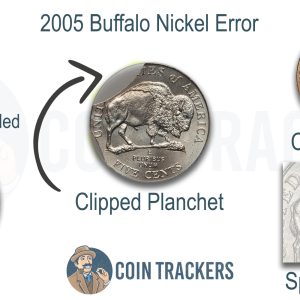
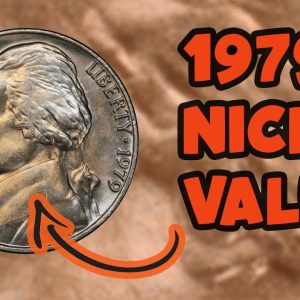
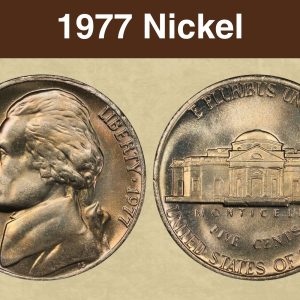
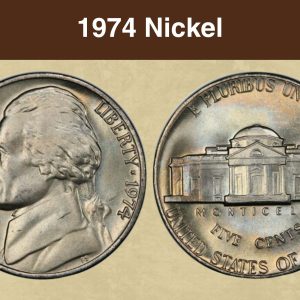
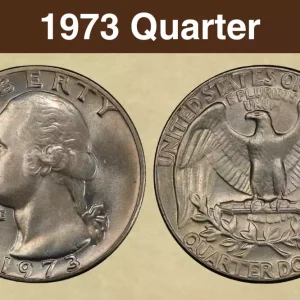
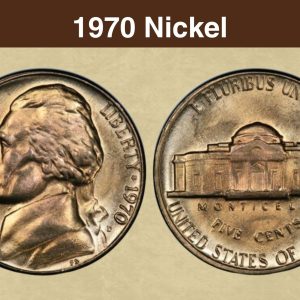
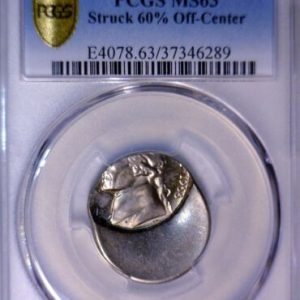
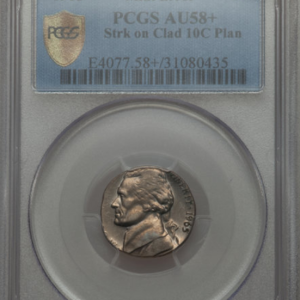
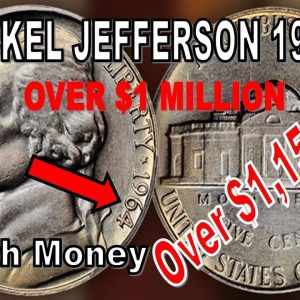
How much is a 1960 nickel worth with no mint mark?
A 1960 nickel with no mint mark is a Philadelphia minted coin, valued at about $0.10-$0.20 in circulated condition and potentially hundreds of dollars in pristine, uncirculated condition. Most standard 1960 Philadelphia nickels are common, but some can have errors or be proofs, significantly increasing their value.
Are there any rare 1960 nickel errors?
This 1960 Jefferson Nickel is a rare find for collectors due to its numerous errors. The coin was minted in the United States and is a valuable addition to any collection. Its unique features include a misaligned obverse die, a double die on the reverse.
What 1960s nickels are valuable?
QDR. That’s what that stands for that quadrupling. Now here on the reverse is where it takes place and that will give the coin a lot of value. Along with a high grade of a proof 66.
Where is the mint mark on 1960 nickel?
No mint mark: Most 1960 nickels were produced at the Philadelphia Mint and therefore will have no mint mark. “D” mint mark: Coins minted in Denver will have a “D” to the right of Monticello.